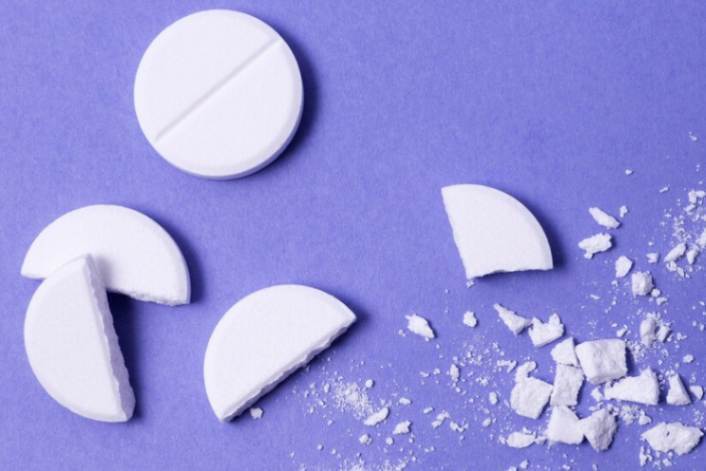Prednisone is an FDA-approved prescription drug that helps with many conditions, like asthma, joint pain, skin rashes, and allergies. Doctors also use it to treat autoimmune diseases and swelling in the body.
But how much prednisone is too much? That’s the question many ask when they are handed their first strip of tablets.
You might also wonder what happens when you stay on this drug for a long time. Or how quickly you should stop. This guide breaks it down for you in plain terms.
What Is Considered A High Dose Of Prednisone?
According to the National Library of Medicine, 40 mg/day or more is considered a maximum prednisone dose. But your exact dose depends on the problem being treated and your health condition.
Some people may do well with 20 mg a day. Others need more because of how their body reacts. High doses are mostly used for short-term relief in severe cases. For example, to treat a bad asthma flare-up, lupus, or a severe allergic reaction.
Doctors decide the dose based on how fast the symptoms need to be controlled. But the higher the dose, the higher the chance of side effects. That’s why it's given with care and never for too long without good reason.
What Are The Recommended Doses Of Prednisone?
Here are the prednisone prescription levels for adults and children:
|
Individuals |
Prednisone Dose |
|
For Adults |
5 mg- 60 mg per day, which is adjusted as needed. |
|
For Children |
0.05 mg- 2 mg/kg a day, usually divided and taken 3-4 times per day (based on body weight). |
Doctors suggest different doses for kids and grown-ups. For adults, the range goes from 5 mg to 60 mg a day. For children, it is based on body weight and is given in small parts throughout the day.
The dosage is often split into types:
-
Low dose is when you take less than 7.5 mg daily.
-
The average dose is between 7.5 mg to 40 mg daily.
-
High doses start from 40 mg and can go up to 60 mg a day.
Doctors might change this as you go. They start with more and slowly bring it down based on how you react.
This tapering helps your body adjust to the lower dose without a shock to the adrenal glands.
Potential Side Effects Of High-Dose Prednisone
When consumed in high doses and for prolonged periods, prednisone can lead to these side effects:
Short-term side effects:
If prednisone is recommended for a short duration, you can experience these common side effects, which subside after some time:
-
Appetite changes
-
Indigestion
-
High blood sugar
-
Fluid retention
-
Sweating & hot flashes
-
Mood changes
-
Restlessness
-
Sleep disturbance
Long-term side effects:
In case you are prescribed prednisone for chronic diseases, you may experience:
-
Weight gain
-
Osteoporosis (weakening of bones)
-
Cataracts and glaucoma
-
High blood pressure
-
Weakened immune system
-
Heart disease
Note: If you experience any symptoms, report them immediately to your doctor, who can help reduce the dose or recommend other alternatives.
Do Women Have Different Prednisone Side Effects Than Men?
Though both women and men have similar side effects, women tend to experience some effects 10% more than men. Those side effects include:
-
Weight gain
-
Fatigue
-
Depression
-
Mood changes
-
Changed appearance
-
Moon face
-
Hair loss
-
Sleeplessness
-
Stomach issues
What Is A 5-Day Prednisone Dosage?
A 5-day prednisone dosage is generally prescribed by doctors for emergency cases like breathing problems, different types of pain, or rashes. It often starts at a 40 mg dose of Prednisone.
This 5-day typical dosage taper is as follows:
|
Day |
Dose |
|
Day 1 |
40 mg dose of Prednisone, two 20 mg tablets. |
|
Day 2 |
30 mg dose of Prednisone that is 1.5 portions of 20 mg tablets. |
|
Day 3 |
20 mg dose of Prednisone, that is, one 20 mg tablet. |
|
Day 4 |
10 mg dose of Prednisone that is half part of a 20 mg tablet. |
|
Day 5 |
5 mg dose of Prednisone, which is 1/4 of a 20 mg tablet. |
|
Day 6 |
Stop it immediately. |
This 5-day dosage taper of prednisone is generally specific but could be altered by your healthcare providers in several ways. Doctors may prescribe 10 mg doses instead of 20 mg. They can also advise taking 40 mg of medicine every day for 5 days, and then ask to stop. However, they can sometimes recommend the tablet at 20 mg and reduce it by 5 mg daily. All of these are regular doses of Prednisone.
What Is The Lowest Dose Of Prednisone You Can Take?
According to the research, 5 or 10 mg is the lowest dose of Prednisone. It helps prevent inflammatory symptoms of early polyarticular rheumatoid arthritis. Moreover, this lower medicine dosage is also known to slow down the bony damage of rheumatoid arthritis. Hence, it is the disease-modifying antirheumatic drugs.
How To Take A Dose Of Prednisone?
Well, prednisone is consumed in a tablet or oral solution. You can use it in the following manner to ensure its effective and safe use:
-
Take as prescribed by doctors: Always follow the prescribed dose by your doctor at the recommended time.
-
Take with food or milk: Have it with food or milk to prevent ulcers and stomach irritation.
-
Swallow whole: Never chew or crush the tablet unless suggested by the provider.
-
Take in the morning: Have it in the morning to prevent insomnia (difficulty staying or falling asleep).
-
Stay hydrated: Drink a lot of water to manage possible side effects.
-
Taper slowly (if needed): Don't suddenly discontinue the medicine used to prevent the risk of improper functioning of the adrenal gland. Always follow a doctor’s plan to safely lower the dose.
-
Monitor side effects: Keep a watch over the side effects and report them to a doctor.
Note: Safe use of prednisone can maximize its benefits and minimize its side effects.
What To Do in Case of Missed Dose of Prednisone?
As soon as you remember it, take the missed dose immediately. However, avoid taking it close to your bedtime as it can make it difficult to sleep. If it's time to have the next tablet, do not miss the one. Avoid double-dosing, whether you are taking prednisone for a short or longer period.
What To Do If You Overdose on Prednisone?
If you have taken prednisone in excessive amounts and experience the symptoms of overdose, immediately see a doctor. Call 911 (an emergency number) or 1-800-222-1222 (Poison Control Center) in case of severe symptoms.
Taking excessive amounts of prednisone can lead to:
-
Tiredness or weakness
-
Nervousness
-
Heart rhythm changes
-
Upset stomach
-
High blood pressure
-
Lower leg swelling
-
Hallucinations or confusion
-
Hearing changes
-
Mood changes
Can Prednisone Be Taken Long-Term?
Yes, but only when needed for chronic conditions like rheumatoid arthritis, lupus, or asthma. In long-term use, doctors usually try to give the lowest possible dose that still works.
Long-term prednisone users need regular check-ups to watch for bone thinning, blood sugar spikes, and blood pressure changes.
You may also be asked to take calcium, vitamin D, or bone-protective medicines along with steroids to protect bone health.
Doctors often weigh the good and bad before continuing long-term treatment.
Can You Drink Alcohol While on Prednisone?
Most doctors advise limiting or avoiding alcohol while on prednisone. Both prednisone and alcohol can irritate the stomach, increase blood sugar, and raise blood pressure.
If both are used together, the chance of stomach ulcers may rise. It may also affect your mood more and cause dehydration.
Always ask your doctor if you plan to drink while on this medicine. They might allow it in small amounts, but only if your health permits.
Can You Stop Prednisone Suddenly?
Never stop prednisone on your own, especially after high or long-term use. Your body needs time to start making its natural steroids again.
Sudden stops may cause adrenal crisis. This can make you dizzy, weak, and even land you in the hospital.
Doctors usually give a taper plan, reducing your dose slowly. This helps the body restart its own system without shock.
If you miss a dose or want to stop, always ask your doctor first.
What Foods to Avoid While Taking Prednisone?
Some foods can make side effects worse when taken with prednisone. These include:
-
Salty foods, which can raise blood pressure
-
Sugary snacks, which can spike blood sugar
-
Caffeine, which can add to restlessness
-
Alcohol, which may upset the stomach
Instead, eat more:
-
Leafy greens, fruits, dal, curd, eggs, and whole grains
-
Low-salt and low-sugar foods
-
High-calcium options like milk and paneer
Eating right can reduce the risk of side effects like swelling, mood shifts, and weight gain.
Final Thoughts
So, what is considered a high dose of prednisone? 40 mg per day or more of prednisone is a high dose. However, this dose can vary depending on the individual and the condition being treated. Taking it in excess amounts can lead to some side effects. Hence, always have it as prescribed and avoid overdosing.
We hope you found this blog informative and got all the answers about this medication in detail.
Frequently Asked Questions
What are the uses of Prednisones?
The use of Prednisone includes treatment of health issues that severely impact your body's immune system. Those problems are chronic asthma, inflammatory bowel disorders, rheumatoid arthritis, or allergies.
How long does Prednisone take to show its effect?
After taking a dose, Prednisone starts showing its effects in about 1 hour. Delayed-release medicine gets to its peak point in 6 hours.
What is the prednisone dosage for arthritis?
5-10 mg per day is the recommended dosage of prednisone for some types of inflammatory arthritis. A doctor may prescribe 80 mg a day for a short period in case of a flare-up of symptoms.
How long does prednisone stay in the system?
It stays in the body for about 16-22 hours after its last use. However, it might take some days to fully get eliminated.
What other medicines can be an alternative to Prednisone?
Several other medicines are there that you can use as an alternative to prednisone. Those are: Azathioprine Leflunomide Mercaptopurine Dexamethasone Mycophenolate

Reviewed by







